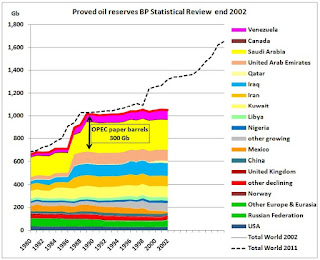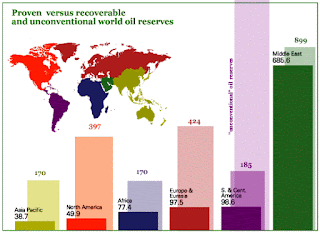Proved reserves are those quantities of petroleum which, by analysis of geological and
engineering data, can be estimated with reasonable certainty to be commercially
recoverable, from a given date forward, from known reservoirs and under current
economic conditions, operating methods, and government regulations. Proved reserves
can be categorized as developed or undeveloped.
If deterministic methods are used, the term reasonable certainty is intended to express a
high degree of confidence that the quantities will be recovered. If probabilistic methods
are used, there should be at least a 90% probability that the quantities actually recovered
will equal or exceed the estimate.
Establishment of current economic conditions should include relevant historical
petroleum prices and associated costs and may involve an averaging period that is
consistent with the purpose of the reserve estimate, appropriate contract obligations,
corporate procedures, and government regulations involved in reporting these reserves.
In general, reserves are considered proved if the commercial producibility of the reservoir
is supported by actual production or formation tests. In this context, the term proved
refers to the actual quantities of petroleum reserves and not just the productivity of the
well or reservoir. In certain cases, proved reserves may be assigned on the basis of well
logs and/or core analysis that indicate the subject reservoir is hydrocarbon bearing and is
analogous to reservoirs in the same area that are producing or have demonstrated the
ability to produce on formation tests.
The area of the reservoir considered as proved includes (1) the area delineated by drilling
and defined by fluid contacts, if any, and (2) the undrilled portions of the reservoir that
can reasonably be judged as commercially productive on the basis of available geological
and engineering data. In the absence of data on fluid contacts, the lowest known
occurrence of hydrocarbons controls the proved limit unless otherwise indicated by
definitive geological, engineering or performance data.
Reserves may be classified as proved if facilities to process and transport those reserves
to market are operational at the time of the estimate or there is a reasonable expectation
that such facilities will be installed. Reserves in undeveloped locations may be classified
as proved undeveloped provided (1) the locations are direct offsets to wells that have
indicated commercial production in the objective formation, (2) it is reasonably certain
that such locations are within the known proved productive limits of the objective
formation, (3) the locations conform to existing well spacing regulations where
applicable, and (4) it is reasonably certain the locations will be developed. Reserves from
other locations are categorized as proved undeveloped only where interpretations of
geological and engineering data from wells indicate with reasonable certainty that the
objective formation is laterally continuous and contains commercially recoverable
petroleum at locations beyond direct offsets.
Reserves which are to be produced through the application of established improved
recovery methods are included in the proved classification when (1) successful testing by
a pilot project or favorable response of an installed program in the same or an analogous
reservoir with similar rock and fluid properties provides support for the analysis on which
the project was based, and, (2) it is reasonably certain that the project will proceed.
Reserves to be recovered by improved recovery methods that have yet to be established
through commercially successful applications are included in the proved classification
only (1) after a favorable production response from the subject reservoir from either (a) a
representative pilot or (b) an installed program where the response provides support for
the analysis on which the project is based and (2) it is reasonably certain the project will
proceed.


No comments:
Post a Comment